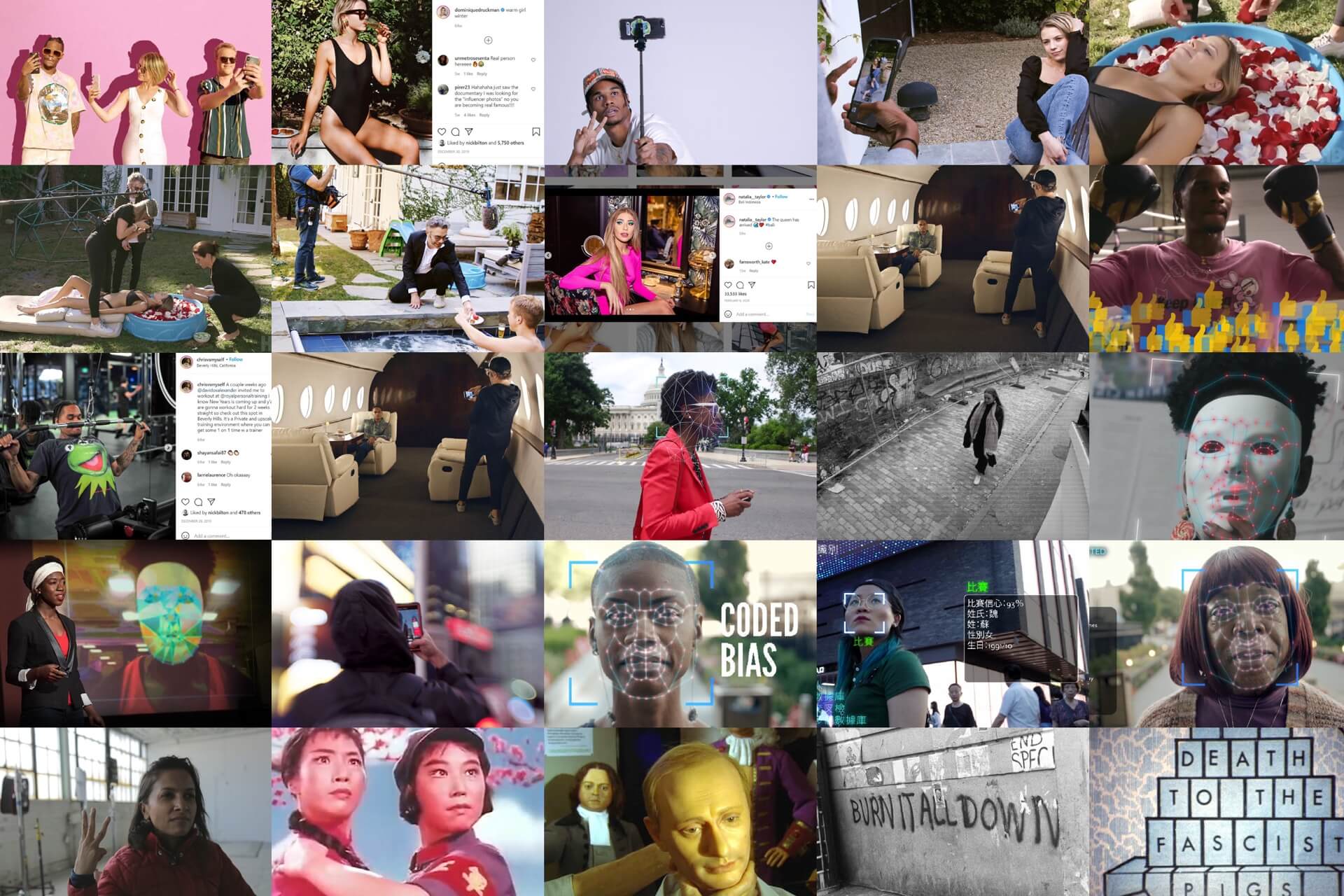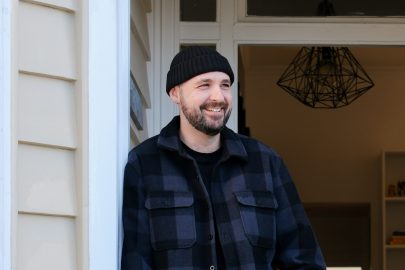Aug 23, 2021 Film & TV
In 2018, I wrote a book about the internet. I described it as a double-edged sword, acknowledging, of course, the dark aspects of the online environment — its insatiable capitalist infrastructure and its origin as a US military creation — while focusing on the positives, particularly its value for Pacific people as a tool of connectivity and collectivity.
In the three years since, for many of us, our relationship to the internet has changed. On a local level, it seems like there’s always someone on your feed about to go on a digital detox, leaving an app for their mental health, or beefing up their privacy settings. On a global level, Donald Trump was banned from Facebook and Instagram for his use of the platform after the Capitol Hill insurrection, Facebook temporarily banned Australian news organisations from posting content and barred Australia users from linking to news articles in retaliation for a new law requiring social media companies to pay for the news published on their platforms, Myanmar’s military shut down its internet to censor discussion of the ongoing coup, and the Sāmoan Government considered shutting down Facebook during its proposed do-over election. And that’s just the past six months.
There once was a promise that a free and open internet could save the world. The combination of freedom of identity and information would, it was predicted, break down social barriers and lead us to a digital utopia. It didn’t take long for that promise to be broken. The internet, it seems, may save the world for some people, but definitely not for everyone.
Linking the global digital divide — the gap between those who have access to technology and those who don’t — to poverty, the United Nations has argued it is now “a matter of life and death” and, in April, UN Deputy Secretary-General Amina Mohammed warned the General Assembly that the digital space could be the “new face of inequality” and that “geopolitical fault lines between major powers are emerging, with technology as a leading area of tension and disagreement”.
Recently, we’ve seen a wave of documentaries critically thinking through the online environment. The Social Dilemma (2020), Can’t Get You Out of My Head: An Emotional History of the Modern World (2021), Fake Famous (2021) and Coded Bias (2021) all grapple with various aspects of the internet and digital technologies including algorithms, artificial intelligence, public shaming, and (de-)platforming to demonstrate how the very design of these technologies reproduces bias and is geared towards manufacturing polarisation in order to maximise attention and, thus, profit. The more of these internet-focused documentaries you watch, the more difficult it becomes to mindlessly scroll through the mundane aspects of random people’s lives. The confronting reality is that our time on social media is both subject to and feeds a new kind of technocratic power.
Can’t Get You Out of My Head was released in February on BBC iPlayer and appears to be intermittently available on YouTube (which is, ironically, where I watched it). Made by British experimental documentarian Adam Curtis, the six-part series spans more than eight hours of collaged archival footage spliced together to zero in on the conflict between individual autonomy and collective authority, channelling the current angst we feel faced with a seeming inability to change anything about the world we live in.
The film charts the historical construction of the “superstructure” of the Western world — our culture, our institutions, our ideas and systems of power — that reigns almost completely over us all. The film is an attempt to take us into the minds of individuals who become paralysed in their desire to create change. In one recent interview, Curtis commented, “Because nothing was happening, it prompted me to examine how we got to this frozen state, where everyone is hysterical, but actually nothing was happening.” What Curtis reminds us is that, in the end, all the structures of power that we resignedly accept and take for granted were at one time made, and so can also be remade.
According to Curtis, in the 1980s the left was forced to retreat from economics as the right ascended to power, and in the new economic climate, regulations were dismantled, the markets released and financialisation given control. This capitalist superstructure is the same thing that drives the internet. Writer and scholar McKenzie Wark takes this idea further when she argues that the economic structure underlying the internet is no longer capitalism, it’s something much worse. A similar analysis underlies the Netflix documentary The Social Dilemma, which shows how social media platforms are inherently designed to encourage addiction, manipulate users and spread disinformation, not to advance any particular political ideology so much as to further the accumulation of money and power.
Our being online — our online shopping, our Zoom calls to our grandmother, our eternal scrolling — makes other people a lot of money, whether or not we’re being charged for these services. This is the myth of free-to-use social media. As internet user blue_beetle famously wrote in a comment on an online article in 2010: “If you’re not paying for a service, then you’re probably the product being sold.” Our job as social media users, then, becomes not only to consume and create content, but to train a machine to get to know us and thus more accurately advertise to us as consumers. And so whether we realise it or not, we are not only the commodities being used and sold to advertisers, we’re also doing the labour.
Why this matters to us shit-posting tweeters here in little ol’ New Zealand is that social media driven by capitalism and the desire to create profit impacts on other things, too. People working to de-radicalise harmful extremists know intimately that the for-profit model means social media algorithms are designed to radicalise beliefs, not de-escalate them. The New York Times described this as a “dangerous on-ramp to extremism by combining two things: a business model that rewards provocative videos with exposure and advertising dollars, and an algorithm that guides users down personalized paths meant to keep them glued to their screens”.
In Can’t Get You Out of My Head, Adam Curtis says this endless attention loop, fuelled by a hunger that is never satiated, helps to ensure the prevailing power systems are never truly challenged, no matter what radical ideas form the content of the videos that keep us watching.
We live in the same yesterday and never a new tomorrow, meaning that the face of something can change but it’s always another version of the same thing. In the age of the individual, we are made to think that we’re the centre of the universe and this technology is ours for the taking, but Curtis reminds us that “power hasn’t gone away. It’s just mutated and morphed into all sorts of different forms, some of which are good, some of which are bad, some of which have grave consequences.”
One particular grave consequence is the focus of the Netflix documentary Coded Bias, which looks at how artificial intelligence, or AI, has racial bias algorithmically programmed in, reinforcing the superstructures of racial power already at play. We talk about algorithms in ways that are completely abstract (and as someone who stopped maths in fifth form, even wrapping my head around the word “algorithm” is a challenge) when they actually replicate existing biases and systems and can then multiply and mutate in ways even their programmers may not understand. These biases, intended or not, can have devastating real-world consequences.
Right now, the New Zealand police are looking into the use of various “emergent technologies” with a team of experts, to “understand and assess potential technology and its implications before testing or adopting it”. To have an organisation that has already admitted its own “unconscious bias” exploring the potential implementation of AI and facial recognition technology for policing feels like the start of an extremely slippery slope to dystopia. If we know that both digital technologies and the police force have problems with structural racism, what will happen when these two things combine?
Still, we know that digital technologies can be used for good. The internet is a place where everyone has their individual voice while still building towards a collective power, as seen in movements like Black Lives Matter. Locally, this kind of social media use has been vital in the platforming of voices and perspectives that don’t traditionally have a footing within mainstream media. Māori, Pacific, Asian, Muslim and Black voices here in New Zealand have relied on social media to contribute to the national discourse. Without it, many users who traditionally have had less social power would find it more difficult to broadcast their experiences and views and to find and organise with those with similar experiences and views.
All of this makes me think of the Salt-n-Pepa song “Let’s Talk About Sex”, but instead of sex, it’s power:
Let’s talk about power, baby
Let’s talk about you and me
Let’s talk about all the good things and the bad things that may be
Let’s talk about power
In the end, all paths lead back to power, to superstructures and the terrifying things that lie beyond selfies in the Van Gogh sunflower room. The sooner we realise that the online is just an extension of the offline superstructure, the sooner we will realise that the thing we both love and disdain so much is just the world around us in pixel form.
The free and open internet gives us the chance to be individuals within a collective, but by continuing to let the technocratic power manifest in local internets, Silicon Valley power plays and censorship will continue to impede our digital democracy. You could say, cynically, that given the military, capitalist superstructure that underpins it, the idea that the internet was ever a democratic technology was only ever a façade.
So here we are, somewhere between the best and worst parts of the internet. It’s paralysing. While it can be hard to get the bad parts of the internet out of my head, I do still hold on to hope that the internet could be opened up and used for genuinely good social purposes. And with that, we could find ourselves on a worldwide web with a genuinely new kind of politic. For that to happen, though, we would need to actually take back some of our own power.
Typing those words makes me want to curl up into the foetal position, because how can we take on the perverse superstructure that has seeped into every aspect of our lives and is now living in our pockets? That we must find a way somehow is Curtis’s whole point: we need to move beyond our paralysis.
What is the internet if not just another machine of the world already in existence? But then, what is a millennial without a hope to change something?
—
This story was published in Metro 431 – Available here in print and pdf.






